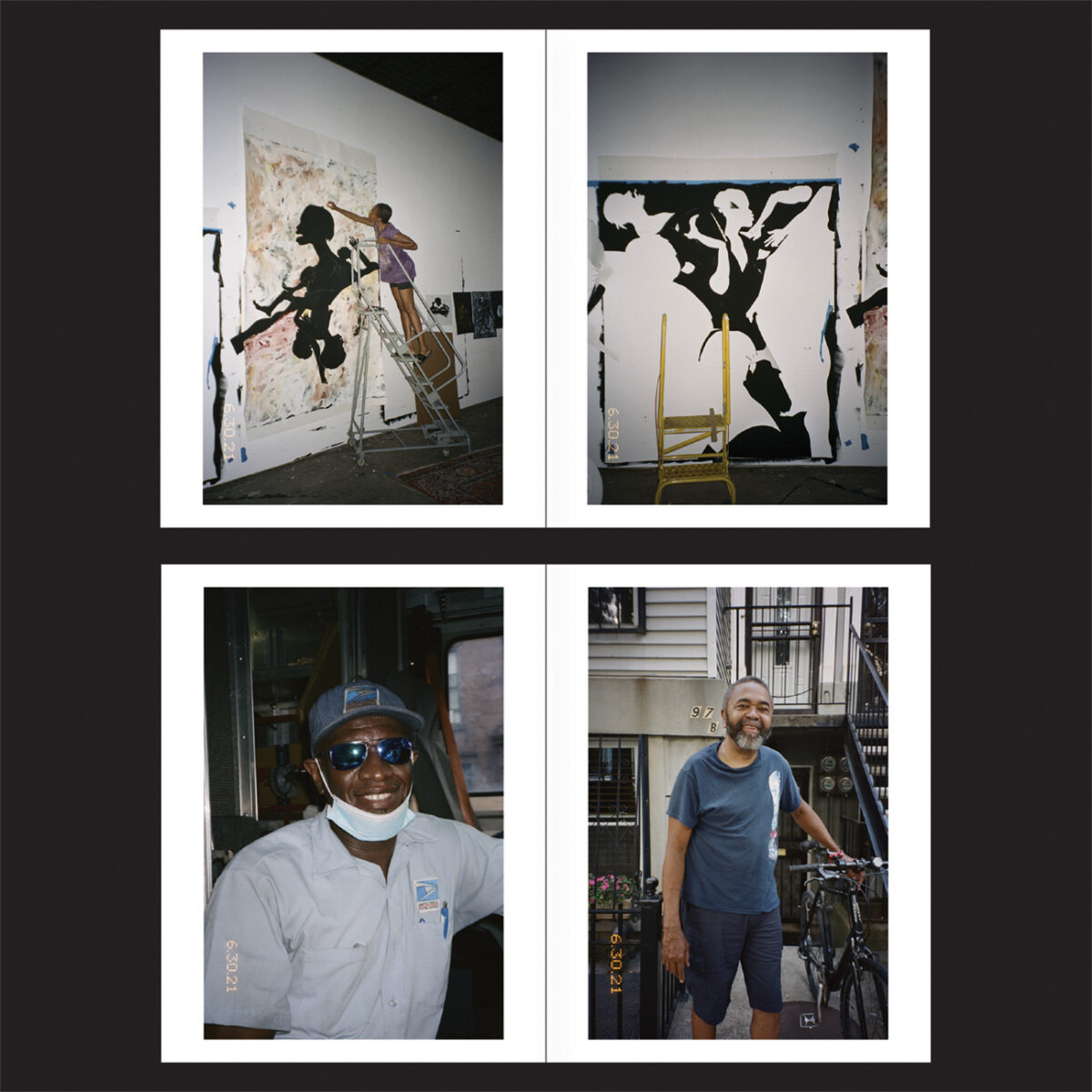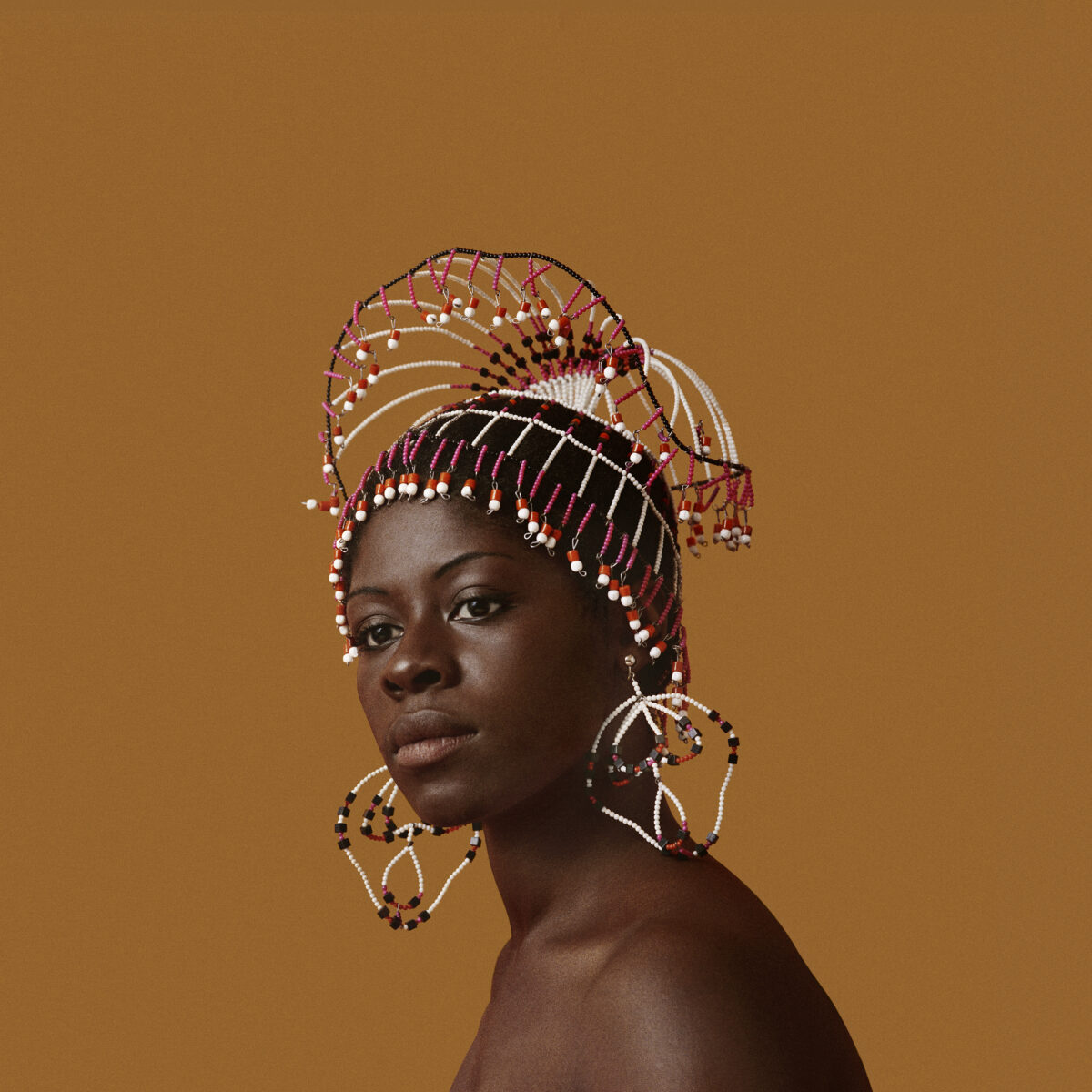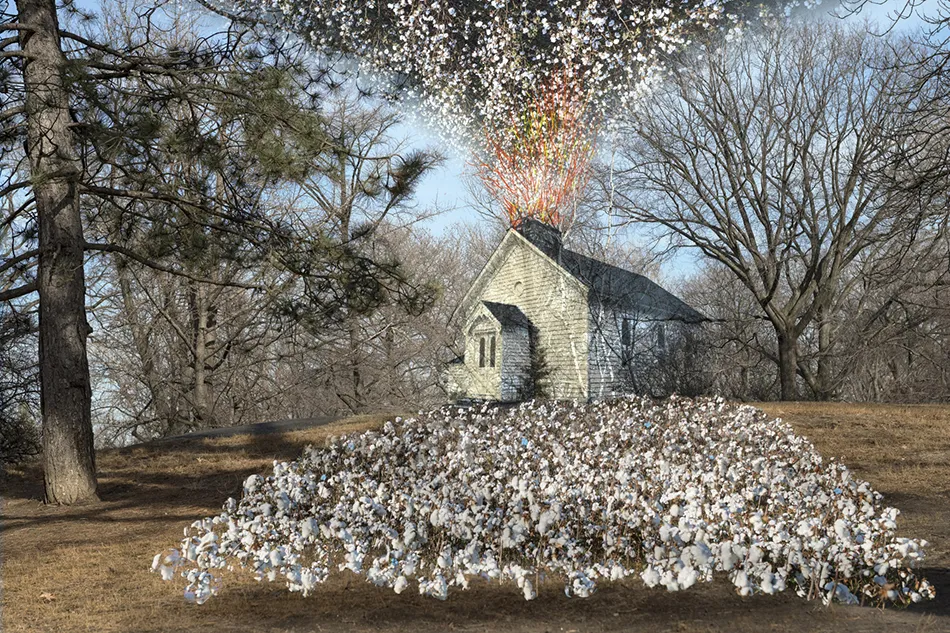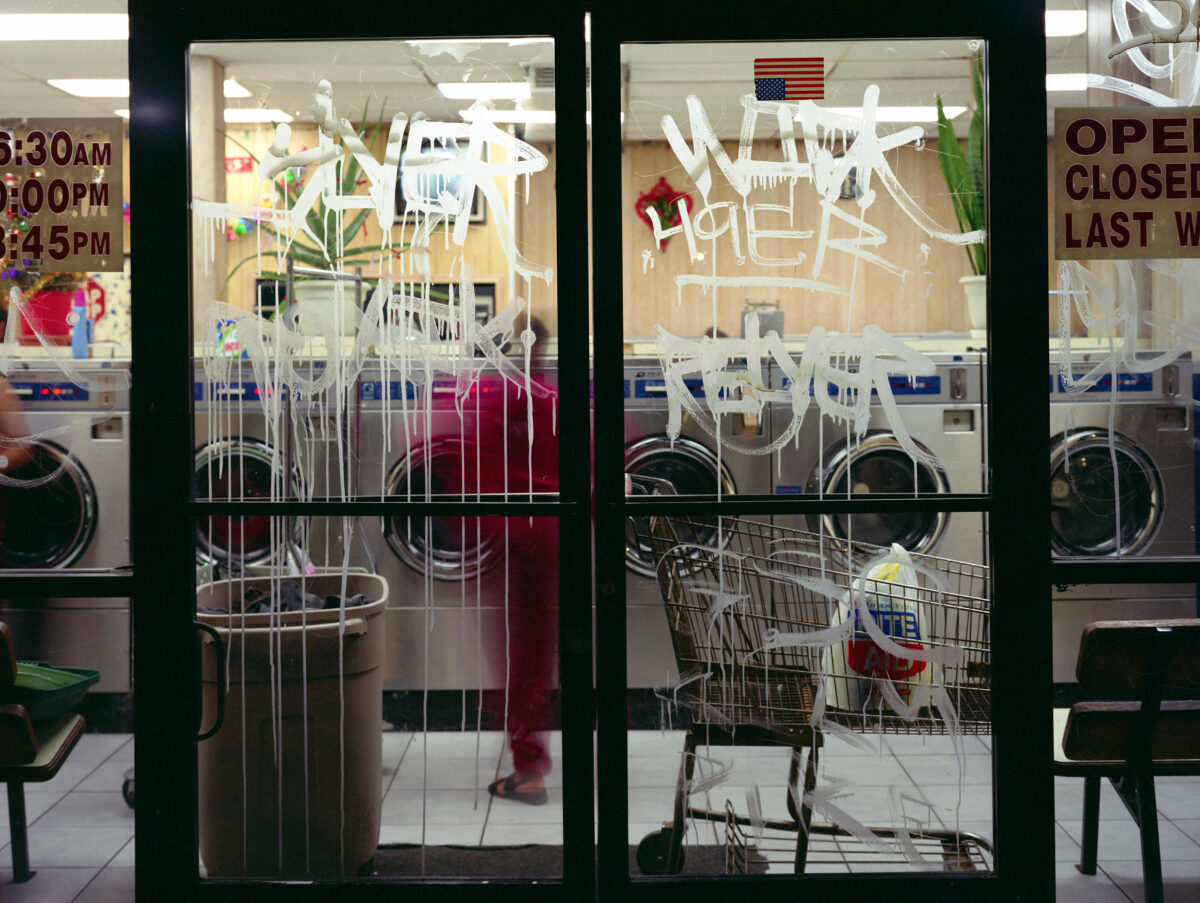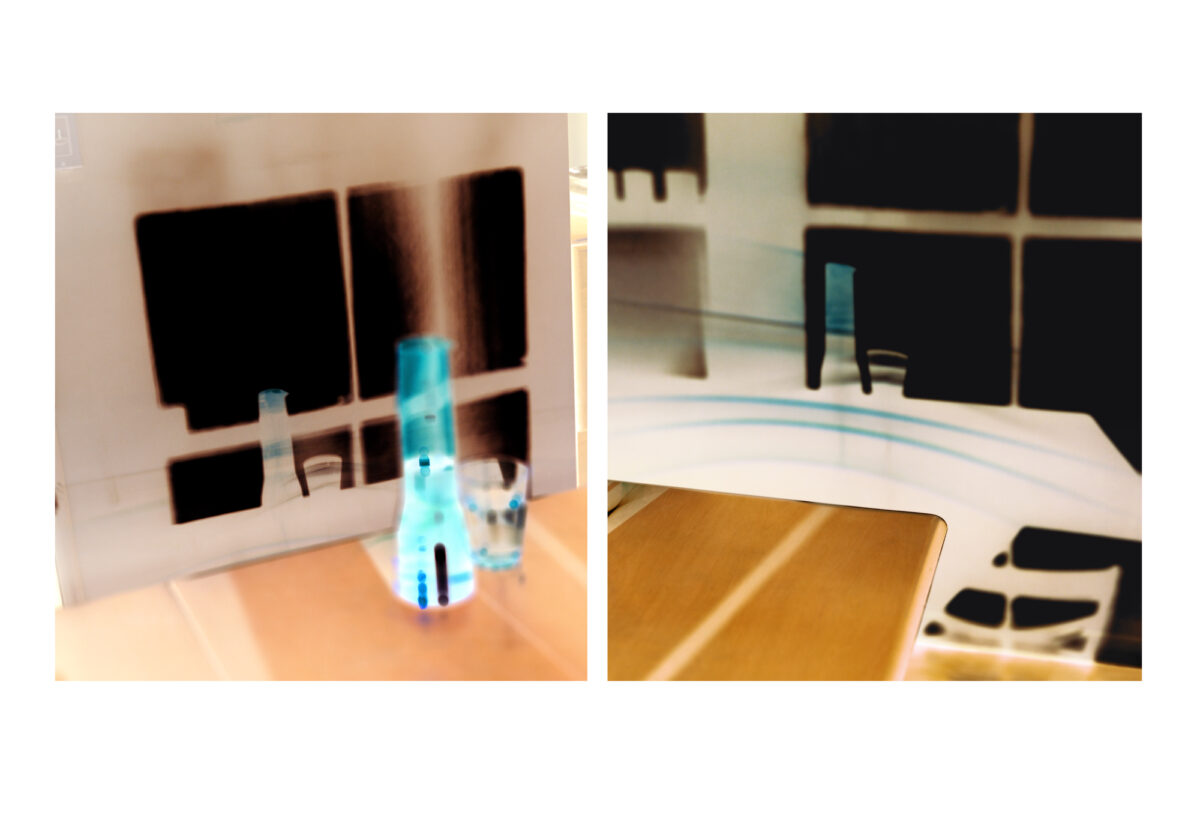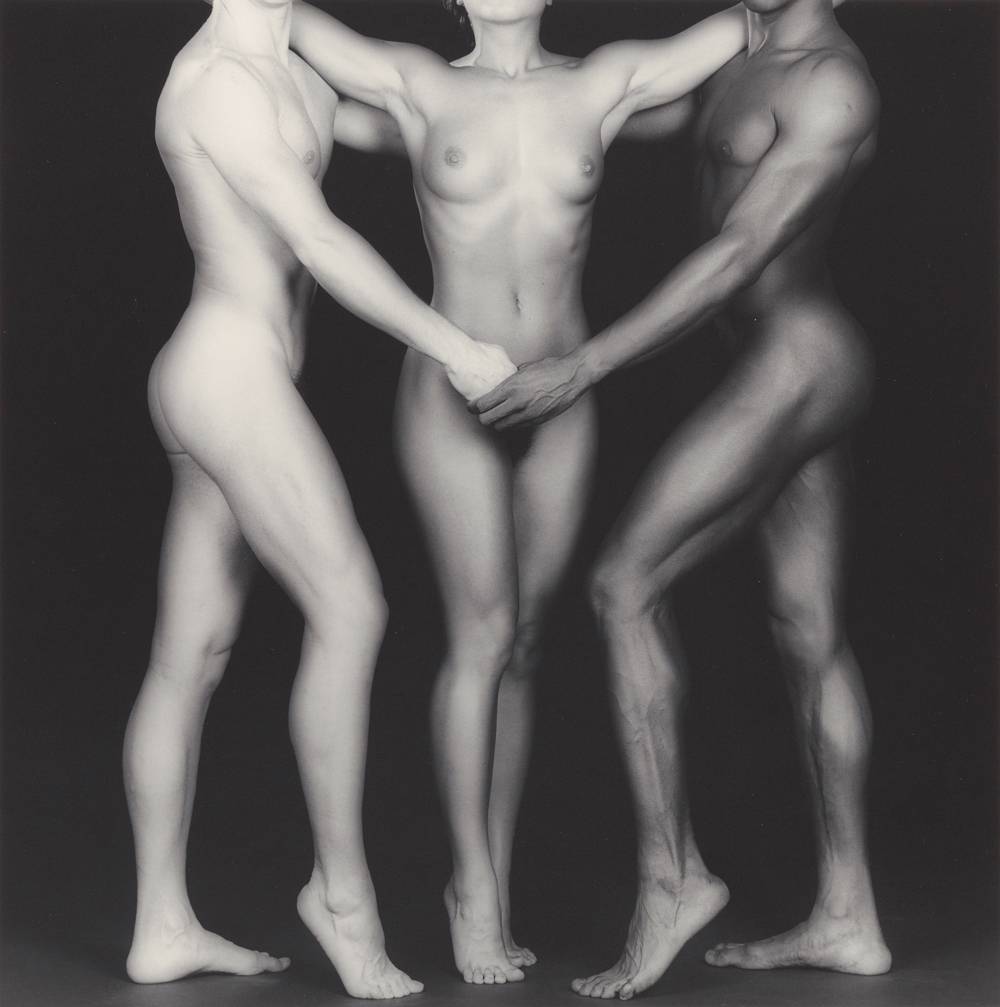

Her nude body painted all over in dark pigment and heavy hair covering her face, Berlin-based artist Carina Brandes jumps in a field of dirt. Her arms and legs are angled out, so her body makes the shape of a star — fitting, since she’s jumping behind a large black cardboard square with a star cut into its center. Brandes’s show at Team Gallery’s Los Angeles bungalow through October 23 consists of tastefully framed black-and-white photographs documenting improvised performance done in private in 2014 and 2015. In another photograph, the artist’s rear, legs, and paint-covered feet dangle over a white wall painted with an expressionistic mess of black. Her actions read as out-there but orchestrated with the camera in mind. The show’s title, Remote Control, reinforces this reading, referencing the artist’s use of a self-timer.
In certain ways, the photographs, intentionally imperfect, conjure images of 1970s feminist performers Marina Abramovic or Rebecca Horn. Ana Mendieta, lying nude covered with foliage, comes to mind, too. But Brandes is channeling the style of these artists more than she’s reimagining their experiments.
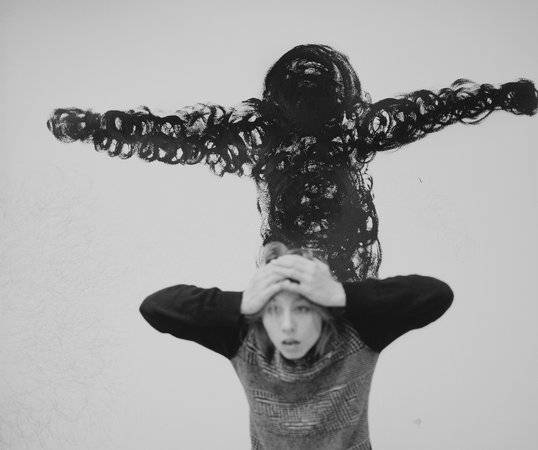

The year before Brandes made the earliest images in the show, Lady Gaga created a music video out of her multi-day Abramovic Method workshop with the increasingly iconic Marina Abramovic. Gaga wanders naked and blindfolded through woods and balances silently on a crystal. Endurance was likely a factor, but the images that resulted are so aesthetically pleasing and crafted they seem the end in themselves. Brandes, too, gives us single, aestheticized glimpses of an action we’ll likely never know more about, her performance-art tactics infused with a pop- and fashion-savvy sensibility (bringing to mind Horn or Mendieta, but also youth culture celebrators Corinne Day or Ryan McGinley).
Even the most aggressively energetic image in the show – of a woman who may or may not be the artist, rolling on a tire in a dark, dirt-covered landscape, frantically fluttering her arms to maintain her balance – is so self-possessed and composed that no backstory is needed. In this way, Brandes’s images are entirely in tune with their era, historical and ahistorical at once, vulnerable enough to connote riskiness but consistent and controlled enough seem like part of a brand.


